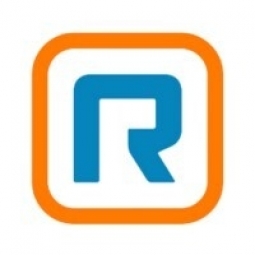Technology Category
- Application Infrastructure & Middleware - Event-Driven Application
Use Cases
- Inventory Management
- Smart Campus
Services
- System Integration
About The Customer
Michael Carr is the co-founder of VolunteerHub, a system that started as a campus chapter of Habitat for Humanity in 1996 at the University of Michigan. The system was initially designed to manage the influx of students who wanted to volunteer. It was automated to handle volunteer sign-ups and soon gained popularity among other Habitat for Humanity chapters in the area. The system was commercialized in 2002 under the name VolunteerHub and now offers a range of features from automated event registration to volunteer workforce management. Michael is a proactive entrepreneur who is always on the lookout for efficient solutions to improve his business operations.
The Challenge
Michael Carr, co-founder of VolunteerHub, a system that offers a range of features from automated event registration to volunteer workforce management, faced significant challenges in managing incoming calls. The toll-free service he initially set up for handling calls was not efficient, with callers frequently encountering a 'All circuits are busy' message. This inefficiency led to the loss of approximately 20% of potential customers. In an attempt to resolve this, Michael tried a Voice-Over-IP (VoIP) service. However, this too proved problematic due to configuration issues and poor customer support. The VoIP telephone he purchased was permanently locked into the old system and couldn't be reconfigured, leading to further waste of resources.
The Solution
Michael found a solution in RingCentral's Professional service bundled with their DigitalLine VoIP service. The SoftPhone software provided by RingCentral proved to be particularly beneficial. It allowed his employees to work remotely without being tied to a specific location. The software worked on the principle that wherever the employee's laptop was, that's where their phone was. This provided a great deal of flexibility and convenience. Additionally, Michael discovered that RingCentral's VoIP service included conference calling ability. This feature saved him the trouble and cost of signing up with another company for conference call services. The cost-effectiveness and comprehensive features of RingCentral's service provided a robust solution to the challenges Michael was facing.
Operational Impact
Quantitative Benefit

Case Study missing?
Start adding your own!
Register with your work email and create a new case study profile for your business.
Related Case Studies.

Case Study
Hospital Inventory Management
The hospital supply chain team is responsible for ensuring that the right medical supplies are readily available to clinicians when and where needed, and to do so in the most efficient manner possible. However, many of the systems and processes in use at the cancer center for supply chain management were not best suited to support these goals. Barcoding technology, a commonly used method for inventory management of medical supplies, is labor intensive, time consuming, does not provide real-time visibility into inventory levels and can be prone to error. Consequently, the lack of accurate and real-time visibility into inventory levels across multiple supply rooms in multiple hospital facilities creates additional inefficiency in the system causing over-ordering, hoarding, and wasted supplies. Other sources of waste and cost were also identified as candidates for improvement. Existing systems and processes did not provide adequate security for high-cost inventory within the hospital, which was another driver of cost. A lack of visibility into expiration dates for supplies resulted in supplies being wasted due to past expiry dates. Storage of supplies was also a key consideration given the location of the cancer center’s facilities in a dense urban setting, where space is always at a premium. In order to address the challenges outlined above, the hospital sought a solution that would provide real-time inventory information with high levels of accuracy, reduce the level of manual effort required and enable data driven decision making to ensure that the right supplies were readily available to clinicians in the right location at the right time.

Case Study
Hardware Retailer Uses Data Warehouse to Track Inventory
Ace tracked which products retailers ordered, when they were ordered and shipped. However, the company could not track or forecast actual sales. Data used for reporting was up to a one-week old, owing to performance and data cleansing issues. Requirement to integrate wholesale and inventory data with POS data to help drive key business decisions, improve category management, lower inventory costs and optimize pricing. Reliance on custom coding to integrate POS data was excessively resource intensive and led to major performance constraints.

Case Study
Remake Enterprise-to-production System
The client was running a legacy material flow tracking system and wanted to replace the system with a more effective one as the system was increasingly expensive to maintain and support and also was not extendable. The client's IT landscape was filled with modern applications and it was difficult to interface the material flow tracking system with modern applications.

Case Study
Expertech - Capital Tool Inventory
Costly tools used to splice fiber optic cables are an important part of Expertech’s operational and capitalized expenses, but the company did not have an automated system in place to track their tools and optimize their usage. The existing data in its tracking system was inaccurate and required manual updating, making it essential for the company to implement an efficient process to track and follow up on its capital tool inventory.









